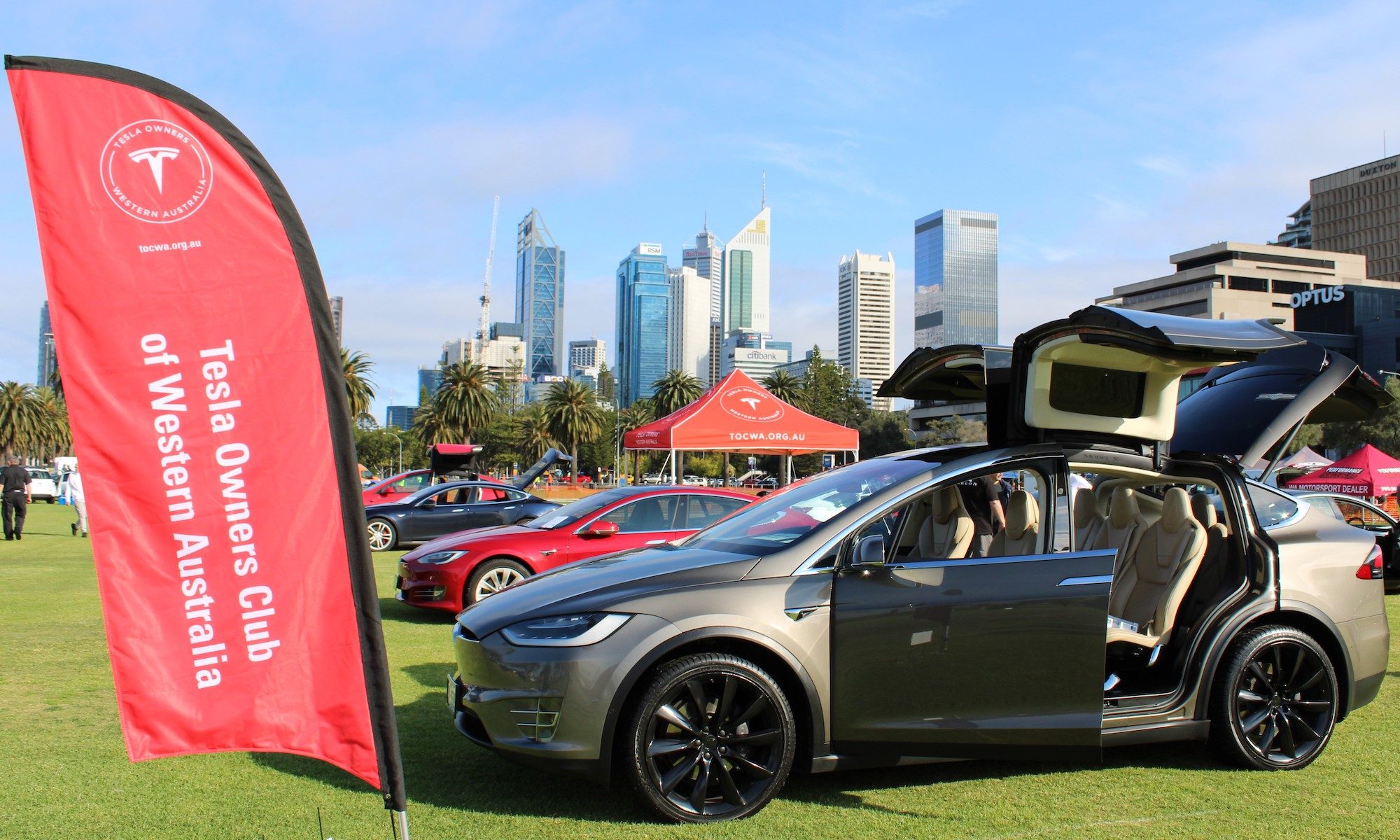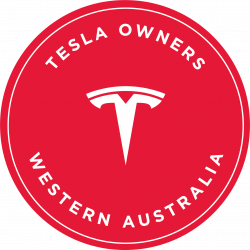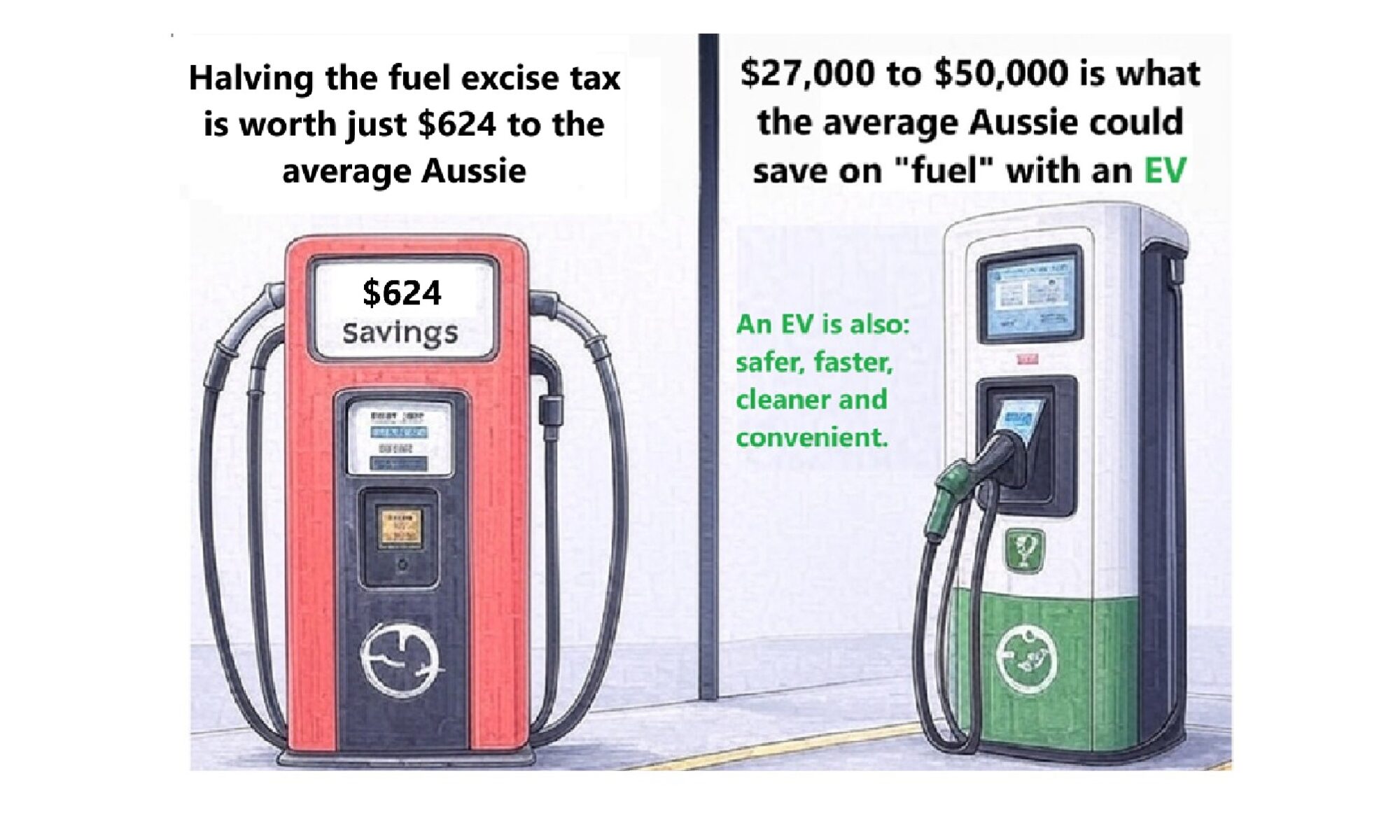As Australians head to the polls this Saturday to elect their federal government, the cost of driving has taken centre stage like never before. Both sides of politics are rolling out policies to ease the cost burden of motoring, but one proposal stands out: the temporary halving of the fuel excise tax, commonly known as the 25-cent fuel discount. It sounds irresistible, but how does it stack up against the savings you could unlock by switching to an electric vehicle (EV)?
Spoiler alert: while the fuel discount saves you about $624, an EV could save you between $27,000 and $50,000—or more—over the life of your car. Let’s break it down and see why the choice is clearer than you may think.
The Fuel Discount vs. EV Efficiency: A Stark Contrast
The 25-cent fuel excise cut sounds like a win, but let’s put it in perspective. At an average fuel price of $2 per litre, this discount trims your cost to $1.75 per litre. For the average Australian family, who burns through 52 litres of fuel weekly, that’s a modest $624 in savings over the twelve months the discount is promised to last. But here’s the catch: it’s temporary. Once those twelve months are up, you’re back to paying full price at the pump.
Now, consider an electric vehicle. EVs are game changers because they’re far more efficient than traditional internal combustion engine (ICE) cars. While ICE vehicles convert only 20-30% of their fuel’s energy into motion, EVs achieve 60-70% efficiency—making them two to three times more efficient. This means every dollar you spend on “fuel” for an EV goes much further. Plus, EV owners have a range of charging options that can slash costs even more, from fast DC chargers to home grid charging, effectively free solar power, or complimentary charging at shopping centres, restaurants, hotels, and beyond.
Two EV Scenarios: Savings for Every Lifestyle
To keep things fair, let’s look at two groups of EV owners and their potential savings compared to the fuel excise discount.
- Group 1: The Worst-Case Scenario
Imagine you live in an apartment with no access to home charging, no solar power, and no free charging nearby. You rely entirely on fast DC chargers, which are the most expensive EV charging option. Even then, these chargers cost about half as much as refuelling an ICE car. With fuel at $2 per litre, this group effectively “pays” the equivalent of $1 per litre —a saving of $1 per litre compared to an ICE car. That’s four times the savings of the 25-cent fuel discount.
- Group 2: The Typical EV Owner
Most EV owners fall into this group, blending home grid charging, free solar power, complimentary charging at businesses, and occasional fast charging on road trips. This mix can cut their “fuel” costs by up to 90%, equivalent to paying just 20 cents per litre. Compared to the $1.75 per litre after the fuel excise cut, this group saves a staggering $1.80 per litre. For the average Australian, that’s a massive reduction in driving costs.


The Numbers Don’t Lie: $624 vs. $27,000-$50,000
Let’s crunch the numbers. The temporary 25-cent fuel excise cut saves the average Australian family $624 over twelve months. But what about an EV? Assuming you drive the same 52 litres worth of distance per week and own your car for the Australian average of just over 10 years, here’s what you save:
- Group 1 (Worst-Case Scenario): Saving $1 per litre equivalent translates to roughly $2,700 per year, or $27,000 over 10 years.
- Group 2 (Typical EV Owner): Saving $1.80 per litre equivalent means about $4,800 per year, totalling nearly $50,000 over 10 years.
And here’s the kicker: a quality EV, like a Tesla Model 3 or Model Y, can easily last longer than 10 years, pushing your savings even higher. Unlike the fleeting fuel excise cut, EV savings are ongoing for the life of your electric vehicle.

Why EVs Are the Smarter Choice
The 25-cent fuel excise cut is a short-term sugar-hit, offering a mere $624 in relief before it vanishes. In contrast, an EV delivers consistent, long-term savings that can transform your budget. Whether you’re saving $27,000 in the worst-case scenario or nearly $50,000 as a typical EV owner, the financial case is undeniable. Plus, with EVs, you’re not just saving money—you’re driving a safer, faster, cleaner, more convenient vehicle that’s also better for the planet.
As you contemplate the halving of the fuel excise cut think beyond the pump. The choice isn’t just about a temporary 25-cent discount. It’s about whether you want to pocket $624 or unlock tens of thousands in savings with an EV. The numbers speak for themselves. Why settle for a once-off drop in the bucket when you could drive toward a future of massive ongoing savings?
(I’ve updated this article because the original version published earlier today had the fuel excise incorrectly stated as being promised for 6 months.)

Pete Petrovsky is TOCWA (Tesla Owners Club of Western Australia) Treasurer, an active TOCWA committee member and a long-time EV enthusiast. In 2014, he placed a $6,000 deposit for a Model X (#39) but ended up purchasing two PHEVs—a Holden Volt and a Mitsubishi Outlander—while awaiting the Model 3. He reserved his Model 3 on its unveiling day in 2016 and took delivery of the Model 3 Performance in September 2019. Pete and his wife now own a total of five Teslas.


